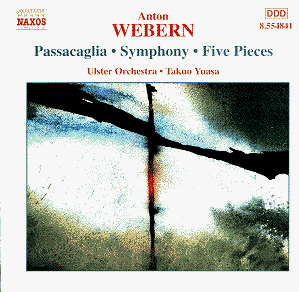 Composer: Wolfgang Amadeus Mozart
Composer: Wolfgang Amadeus Mozart
Works: Flute Quartet No. 1 in D major, K. 285; Oboe Quartet in F major, K. 370; Clarinet Quintet in A major, K. 581
Performers: Jaime Martin (flute), Jonathan Kelly (oboe), Nicholas Carpenter (clarinet)
Recording: January – March 1996, No. 1 Studio, Abbey Road, London
Label: EMI
Mozart’s chamber works are a testament to his genius, revealing the interplay between melodic invention and harmonic sophistication that defines his style. The Flute Quartet No. 1 in D major, K. 285, the Oboe Quartet in F major, K. 370, and the Clarinet Quintet in A major, K. 581 encapsulate the evolution of Mozart’s compositional voice, bridging the Classical ideals of clarity and balance with the burgeoning emotional depth of the late 18th century. This recording by the Brindisi Quartet, featuring distinguished young wind players, serves as a compelling exploration of these works, highlighting both their historical context and the performers’ interpretative choices.
The Brindisi Quartet, along with Jaime Martin, Jonathan Kelly, and Nicholas Carpenter, offers an interpretation marked by clarity and precision, particularly in the two earlier quartets. The Flute Quartet and Oboe Quartet showcase Mozart’s lyrical beauty and conversational textures. The ensemble’s articulation is commendable, especially in the rapid passages where Martin’s flute emerges with a bright, nimble quality that captures the exuberance of the D major quartet. Each phrase is executed with a lightness that brings out the playful character inherent in Mozart’s writing. The oboe’s role, interpreted by Kelly, adds a contrasting warmth, especially in the Adagio of the Oboe Quartet, where the interplay between the instruments embodies a delicate dialogue that is both lyrical and expressive.
Critically, the sound quality of this recording deserves particular mention. The engineers at EMI have achieved a remarkable balance, allowing the listener to appreciate the intricate textures and interwoven lines of the ensemble. Each instrument is rendered with clarity, ensuring that the counterpoint within the music is discernible—a feat that is often elusive in chamber recordings. This transparency allows for a full appreciation of Mozart’s intricate writing, where each voice has its own character yet contributes to a cohesive whole.
However, the performance of the Clarinet Quintet, while technically sound, raises questions regarding interpretative depth. The ensemble’s approach is marked by a buoyant lightness that, while charming, may overlook the profound emotional undercurrents that permeate this late work. The clarinet’s rich timbre, beautifully rendered by Carpenter, does not quite achieve the gravitas that one might expect in the slow movement, where a more introspective interpretation could reveal the darker shades of Mozart’s final year. Comparatively, other recordings, such as those featuring the likes of Richard Stoltzman or the Emerson String Quartet, offer a more nuanced exploration of this quintet’s emotional landscape, presenting a richer tapestry of expression.
The Brindisi Quartet’s recording is a commendable addition to the discography of Mozart’s chamber works. Their performance exhibits a commendable technical prowess and a delightful sense of ensemble. While the lighter approach in the Clarinet Quintet may not resonate with all listeners, the overall execution across the three works presents a vibrant and engaging portrait of Mozart’s genius. This recording is particularly well-suited for those seeking an accessible entry into the world of Mozart’s chamber music, while more seasoned listeners may find themselves yearning for a deeper exploration of the emotional complexities present in his later works.



